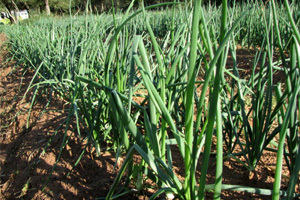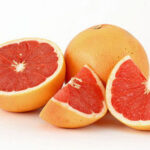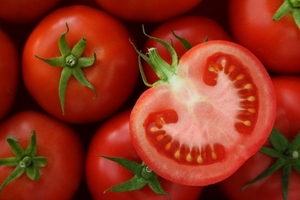While growing small green onions or bunch onions can be easy for most folks, growing really big onions can be more of a challenge. Nothing tastes better than a big sweet onion cut in slices on a hamburger. Well, nothing except a big tomato, that is.
The first step to growing a grapefruit-size onion is to pick the best variety for your area. In Texas, the 1015 Supersweet is the best, bar none. It was bred for Texas. The reason it’s called the 1015 is because the seed is planted on or around October 15, but the sets are planted in January. In the northern part of the US, look for long day varieites such as Big Daddy or Red Zeppelin. When buying sets, look for sets, or baby onions, about as big around as a pencil. Smaller sets are better than larger ones because larger sets have a tendency to bolt or flower. That is why you need to grow onions that are appropriate for the amount of daylight your receive during the onion growing season. In the southern states, you grow short day length varieties because the days get hot so fast in the spring that it can cause long day onions to bolt. When this happens you lose quality and storage ability because the green flower stalk comes up through the middle of the bulb and prevents the neck from tightening up as the onion dries. When you buy sets, it’s OK if they look a little dry, as they will come to life soon after planting, but you should avoid sets that are completely decimated.
Onions like a well-drained fertile soil with a Ph of 5.5 to 7.0, so if you are growing in heavy clay you will need to raise the beds so they will drain. Onions like consistent moisture, but don’t like to sit in water. Lots of organic matter should be added to clay soils to improve soil quality and drainage. Manure and organic matter must be very well composted. Raw manure will cause lots of disease problems. Onions like a good supply of nitrogen, high levels of phosphorous, and medium levels of potassium. Dig a trench 4 inches deep and add a band of phosphorous or a fertilizer high in phosphorous at the rate of ½ cup per 10 foot row and cover with 2 inches of soil. Plant sets within 6 inches of the trench 1 inch deep 6 inches apart. Measure the planting depth of bulbs from the bottom of the bulb to the top of the soil. You can plant the onions in the trench, but you can also use the trench to side dress your onions during the growing season by planting the onions parallel to your fertilizer trench. Make rows 6 inches apart. For example, five rows in a 3-foot-wide bed or seven rows in a 4-foot wide bed. Onions are heavy nitrogen feeders. Keep in mind that every leaf of an onion plant is another layer of the onion, so good top growth is essential. Begin side dressing with a nitrogen fertilizer (21-0-0) 3 weeks after planting and every two weeks until 30 days before harvest. The correct amount of nitrogen to add is one cup per 20 feet of row.
Onions don’t have many problems, but neck rot and other mildew problems can show up if too much fertilizer is used or you don’t rotate your crops. Skip 2 years between planting in the same place so disease pathogens won’t be able to take hold. If you have problems one year and plant in the same place the next, you will increase your chances of crop failure. Harvest when one-quarter of the tops on your crop have fallen over. Cutting the flowers off the onions in order to extend the crop or make bigger bulbs will not increase your yields. The best thing to do if the onions begin to flower is to pull them and enjoy for dinner. Onions store best if put in mesh bags for good air circulation. A great source for onion sets as well as a calendar for planting onions in your area is Dixondale farms at www.dixondalefarms.com or (877) 367-1015.






